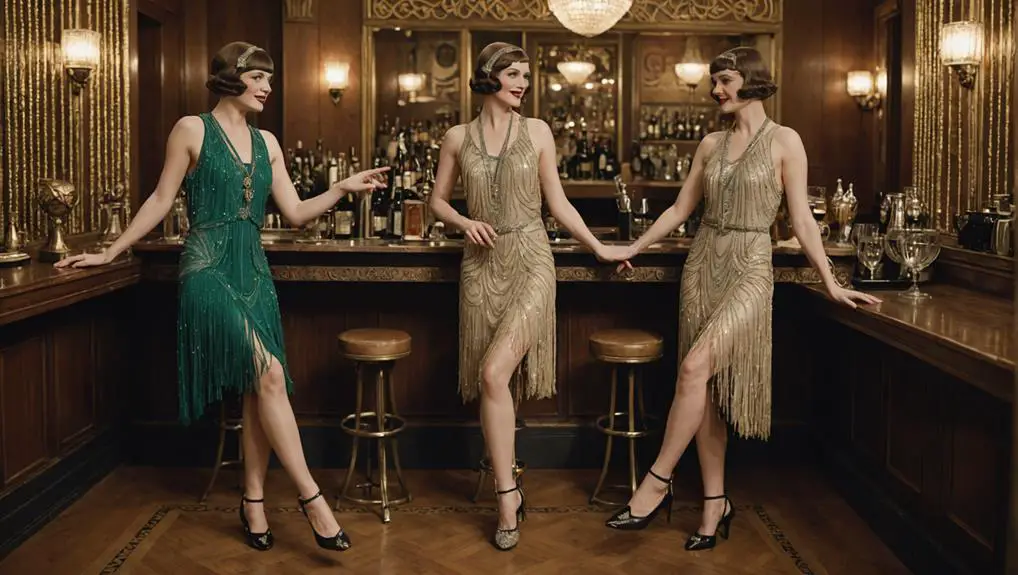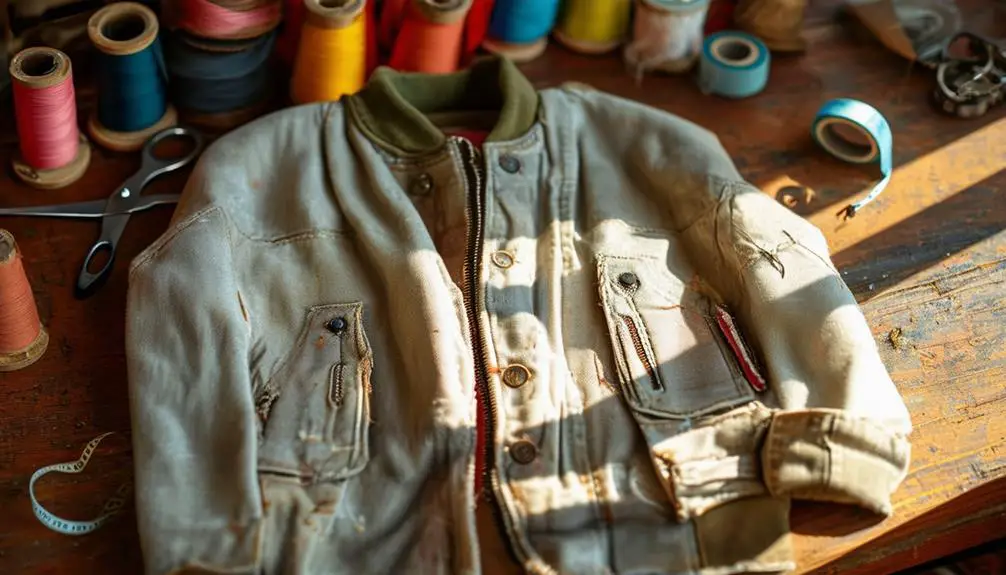In the 1920s, women's T-strap heels became a symbol of liberation and style, capturing the spirit of the flapper movement. You'll notice their unique design featured a vertical strap down the foot and an ankle strap for support, blending elegance with comfort. These heels, ranging in height, complemented shorter hemlines and embraced bold colors and materials like leather and embellishments. As women sought to express their independence, T-straps quickly became a staple that defined a generation. This iconic footwear not only changed fashion but also sparked a trend that continues to inspire today, inviting you to explore its lasting impact.
Historical Context of T-Strap Heels

In the vibrant landscape of the 1920s, T-strap heels emerged as a pivotal element of women's fashion, symbolizing both style and a newfound sense of freedom. This era, often dubbed the Jazz Age, marked a significant transformation in women's roles and aesthetics. T-strap shoes reflected this change, offering a blend of comfort and elegance that resonated with the flapper movement. As women began to embrace shorter hemlines, these shoes became a focal point, accentuating their liberated style. The craftsmanship of T-strap heels often included unique design elements and high-quality materials, which were characteristic of vintage fashion from this period, making them highly sought after by collectors and enthusiasts identifying vintage characteristics.
The design of T-straps, characterized by a vertical strap and often an ankle strap, represented a break from the traditional, restrictive footwear of previous generations. This shift wasn't just about fashion; it signified a broader cultural movement towards women's liberation. Popular culture amplified the significance of T-strap shoes, with iconic figures in film and music frequently spotted wearing them. This visibility helped solidify their status as a staple in women's footwear.
Thus, T-strap heels encapsulated the spirit of the 1920s, merging practical design with a modern aesthetic, and serving as a powerful symbol of a generation ready to embrace change and express individuality through fashion.
Key Design Features
The distinctive design of T-strap heels captures the core of 1920s fashion, showcasing a silhouette that seamlessly blends elegance with practicality. The hallmark of these shoes is the vertical strap that runs down the foot, connecting to a horizontal strap across the front. This unique configuration not only creates a visually appealing shape but also provides essential support, often enhanced by an ankle strap.
Crafted from various materials, including luxurious leather and soft suede, T-strap heels cater to diverse preferences, offering options in both flat and heeled styles. The versatility of these shoes makes them ideal for pairing with an array of outfits, from casual dresses to more formal attire, solidifying their status as a wardrobe staple during the Jazz Age.
A defining feature of T-strap heels is the decorative elements—embellishments and intricate detailing—that embody the glamour of the flapper culture. These design choices not only elevate the aesthetic appeal but also reflect the spirited, carefree nature of the era. In principle, T-strap heels encapsulate a blend of style and functionality, making them an enduring symbol of 1920s fashion.
Fashion Trends of the 1920s
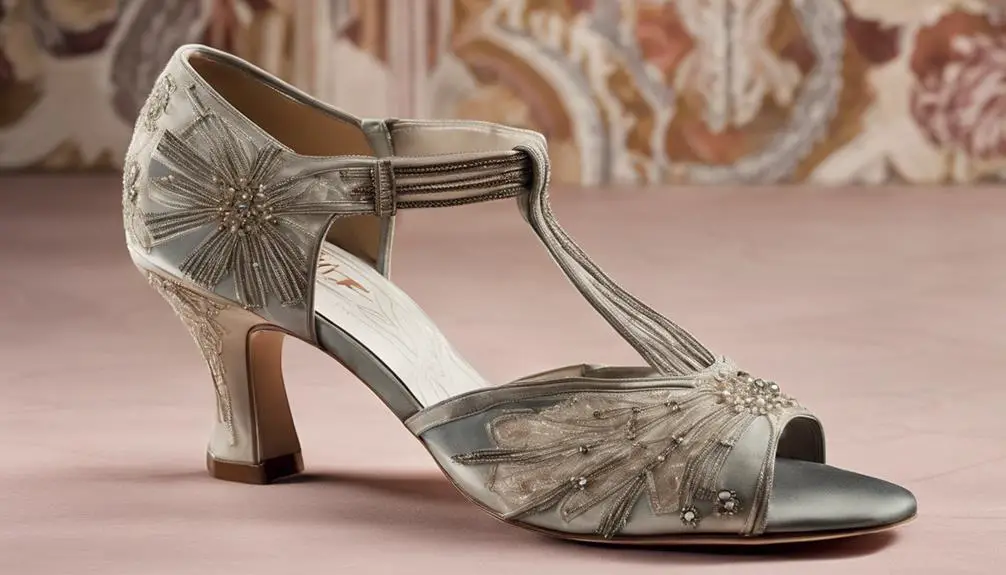
Fashion trends of the 1920s marked a revolutionary shift in women's style, as flapper dresses and T-strap heels became emblematic of a new era of freedom and self-expression. The popularity of vintage clothing labels during this time helped define fashion identity, showcasing the craftsmanship and quality of footwear. You can see how the shorter hemlines of the decade complemented the chic design of T-strap heels, blending comfort with elegance. The flapper culture, thriving on modernity and liberation, embraced these shoes as symbols of women's independence, pushing boundaries in both fashion and societal norms.
T-strap heels weren't just a footwear choice; they were a versatile accessory that could enhance any outfit, whether casual or formal. The heels accentuated the feminine silhouette, allowing women to feel both stylish and confident. The era's bold colors and diverse materials, like leather and suede, added character to T-strap designs, making them stand out in a world keen for aesthetic change.
With the influence of iconic figures from film and music, T-strap heels became a staple in women's wardrobes, symbolizing the vibrant spirit of the 1920s. Their lasting appeal is evident today, as vintage enthusiasts seek out these timeless pieces, reminding us of a decade that truly revolutionized women's fashion.
Cultural Significance of T-Straps
Embodying the spirit of liberation and modernity, T-strap heels emerged as a powerful symbol of women's evolving roles during the 1920s. These T-strap shoes marked a significant departure from traditional, restrictive footwear, offering women a blend of comfort and elegance that reflected their newfound freedom. As shorter hemlines became fashionable, the design of T-straps drew attention to women's feet, making them a staple in the wardrobes of the era.
The cultural significance of T-strap shoes was deeply intertwined with the flapper movement, representing a shift towards self-expression and independence. Women began to embrace their identities, and these shoes became a canvas for showcasing their individuality. Influential figures in film and music embraced T-straps, further propelling their status as fashionable footwear and reinforcing their role as symbols of modernity.
Even today, T-strap shoes continue to resonate within contemporary fashion, demonstrating their lasting cultural impact. Designers frequently reimagine this vintage style, proving that the essence of the 1920s still inspires modern aesthetics. Ultimately, T-straps encapsulated a transformative era, embodying the spirit of women's liberation and the bold strides they made toward self-definition.
Popularity Among Flappers
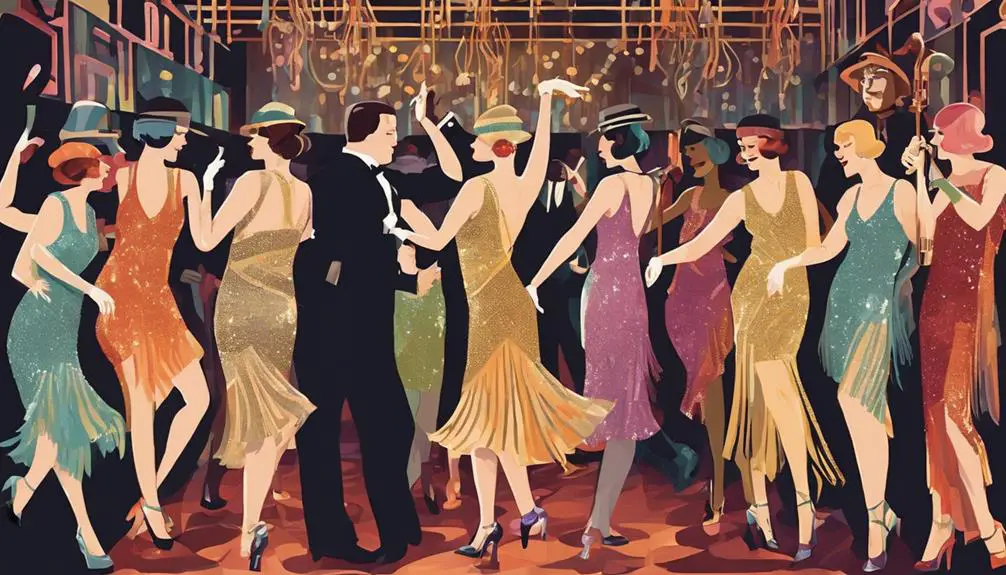
With the rise of the flapper movement, T-strap heels quickly became a fashion staple that perfectly complemented the era's daring aesthetics. These shoes, characterized by their unique design of a vertical strap down the foot and an ankle strap, provided both elegance and comfort. As flappers embraced shorter hemlines and a more liberated look, T-strap heels enhanced their feminine silhouettes, making them ideal for the spirited social activities of the Jazz Age.
The popularity of T-strap heels among flappers wasn't just about style; it symbolized a break from traditional footwear norms and reflected women's growing independence. As these heels gained traction, they became synonymous with the flapper lifestyle, sought after by fashion enthusiasts and collectors alike.
| Feature | Description |
|---|---|
| Design | Vertical and ankle straps |
| Ideal Occasions | Dancing and social events |
| Cultural Significance | Symbol of women's independence |
In this way, T-strap heels not only completed flapper outfits but also encapsulated the spirit of a generation that dared to redefine femininity.
Modern Interpretations of T-Straps
The resurgence of T-strap heels in contemporary fashion showcases how designers are skillfully blending vintage aesthetics with modern sensibilities. You'll find that today's T-strap heels retain the classic elegance of their 1920s predecessors while incorporating updated design elements that appeal to current fashion trends.
Contemporary designers have reimagined T-strap heels, offering a diverse array of materials, colors, and patterns to cater to various consumer tastes. Whether you prefer soft suede, glossy patent leather, or even sustainable fabrics, there's a style for you. Many modern iterations feature embellished straps and unique heel shapes, infusing a fresh twist into this timeless design.
These T-straps have regained popularity on runways and in vintage-inspired collections, making them a go-to choice for both fashion-forward individuals and vintage enthusiasts alike. Their versatility is another selling point; you can easily pair them with casual outfits or elegant evening wear, solidifying their place as a staple in contemporary women's footwear. By choosing T-strap heels, you're embracing a piece of history while enjoying the comfort and style of today's innovations.
Notable Styles and Variants
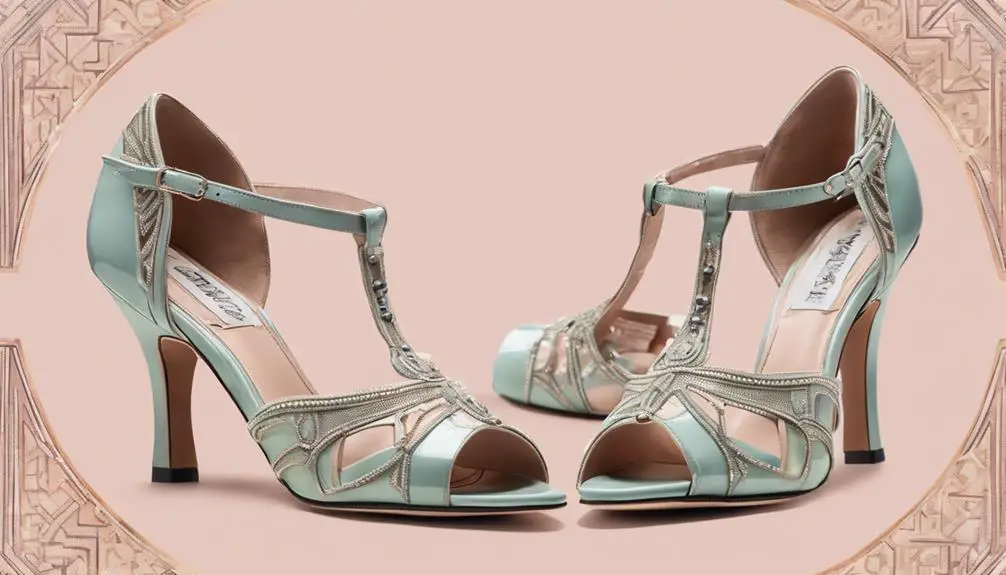
Notable styles and variants of T-strap heels emerged as a reflection of the dynamic fashion landscape of the 1920s. Characterized by a vertical strap down the foot, these shoes often featured an ankle strap for added support, making them a practical choice for women who danced the night away. You'd find T-strap heels available in a range of materials, from supple leather to soft suede, striking the perfect balance between comfort and style.
The heel heights of T-straps varied, typically ranging from flats to around three inches, catering to the needs of the modern woman who embraced newfound freedom. Decorative elements such as beading and embroidery adorned many styles, enhancing their vintage appeal and complementing the bold, vibrant clothing of the era. This attention to detail reflected not just aesthetic preferences but also a cultural shift towards women's liberation, as T-strap heels symbolized a break from the restrictive footwear of previous generations.
Ultimately, the T-strap heel wasn't just a shoe; it was a statement of modernity, embodying the spirit of the 1920s and the women who wore them.
Materials Used in 1920s Shoes
During the 1920s, a variety of materials transformed women's footwear, making it both stylish and functional. The era was defined by an elegant yet bold aesthetic, and the materials used in shoes reflected this shift. Here are three key materials that shaped footwear design during this time:
- Leather: The primary choice for durability, leather was often used in high-shine finishes, like glacé calf leather, adding a luxurious touch to any outfit.
- Suede: This softer material provided a unique texture, enhancing the overall design while remaining comfortable enough for social gatherings.
- Fabric: Bold colors and patterns in fabric materials added vibrancy, appealing to the liberated spirit of the flapper culture.
Decorative elements like beading, embroidery, and brocade were frequently integrated into the shoe designs, elevating their glamour and aligning with the fashionable aesthetics of the time. Additionally, pigskin leather linings offered extra comfort, making these shoes perfect for dancing and nightlife. This combination of materials not only showcased the creativity of the era but also demonstrated a commitment to both style and practicality in women's footwear.
Impact on Women's Fashion
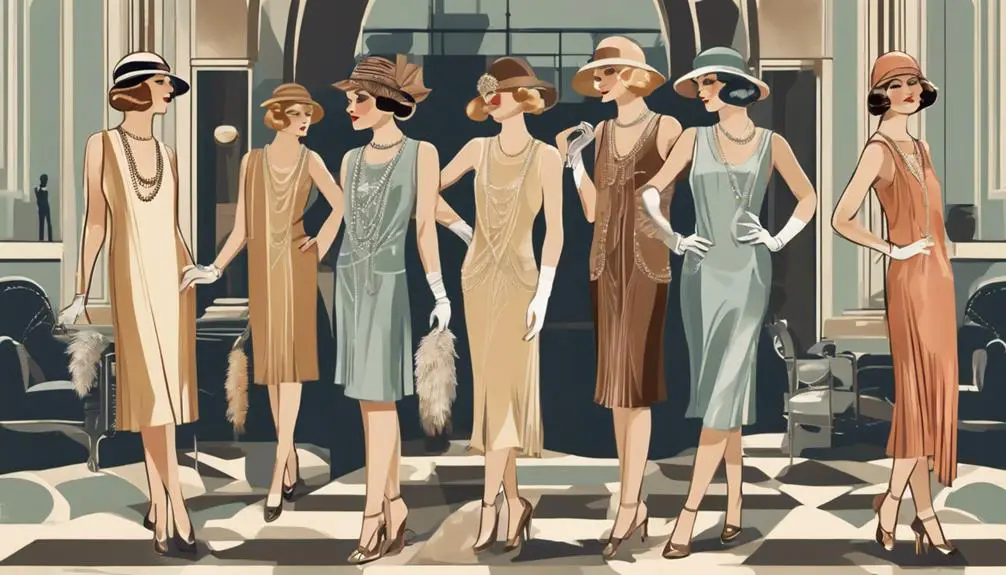
Emerging alongside the bold materials of the 1920s, T-strap heels became a defining element of women's fashion, perfectly capturing the spirit of the flapper movement. These shoes reflected a cultural shift, allowing women to break free from the constraints of traditional footwear. With their unique design, T-strap shoes provided both comfort and style, enhancing the feminine silhouette while accommodating shorter hemlines.
As you embraced the liberated styles of the Jazz Age, T-strap heels became a staple in your wardrobe. Their versatility meant you could wear them for casual outings or formal events, symbolizing the evolving roles of women in society. This adaptability showed how T-strap shoes weren't just a trend; they were a statement of independence and empowerment.
The popularity of T-strap heels also highlighted a broader movement toward comfort in fashion. No longer were women confined to rigid, uncomfortable shoes. Instead, T-straps represented a significant shift toward practicality without sacrificing elegance. In this way, T-strap shoes became cultural icons, marking an era that celebrated both style and the empowerment of women, forever altering the landscape of women's fashion.
Frequently Asked Questions
What Era Are T-Strap Heels From?
T-strap heels originated in the 1920s, a transformative era marked by women's evolving fashion. You'll find their design symbolizes a shift toward comfort and elegance, reflecting broader societal changes in femininity and independence during that time.
What Kind of Heels Were Worn in the 1920s?
In the 1920s, you'd find a variety of heels, including elegant pumps and playful T-straps. They featured diverse heights, materials, and embellishments, reflecting the era's bold fashion and the newfound freedom in women's styles.
When Were T-Strap Shoes Popular?
T-strap shoes gained popularity in the 1920s, becoming a fashion staple. They symbolized liberation and elegance, perfectly complementing the era's shifting styles. You'd find them in both casual and formal settings, enhancing your wardrobe's versatility.
What Was the Most Popular Shoe in the 1920s?
In the 1920s, the most popular shoe was characterized by its stylish design and versatility. You'd find women embracing various styles, reflecting changing fashion norms and newfound freedom, emphasizing comfort without sacrificing elegance in their footwear choices.
